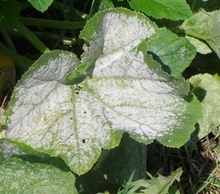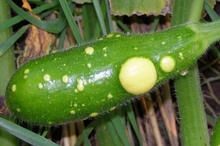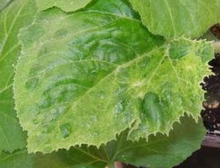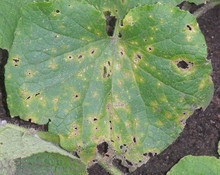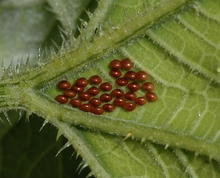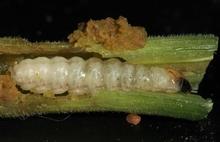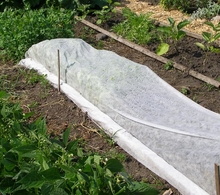Quick facts
- This page highlights non-chemical practices to prevent or manage common insect and disease problems of cucumber, pumpkin and squash.
- These insects and diseases are common on many plants in the squash family, including winter squash, zucchini, watermelon, muskmelon and gourds.
- For more detailed information follow the links in each section.
- Click on an image to enlarge it.
- See Growing healthy vegetables for more detailed information on how to keep your garden disease and pest free.
Powdery mildew
- Choose plant varieties that are resistant or tolerant to powdery mildew.
- More information on powdery mildew.
Virus
- Choose plant varieties that are resistant or tolerant to virus.
- Remove weeds in the field.
Angular leaf spot and anthracnose
- Choose plant varieties that are resistant to angular leaf spot and anthracnose.
- Use drip irrigation to keep leaves dry. Don't work in plants when wet.
- Remove and destroy or bury infected plants after harvest.
- Don't plant cucumber, pumpkin, squash or melon in the same location for 2-3 years.
- Don't save seed from infected plants.
More information on angular leaf spot.
More information on anthracnose.
Squash bug
- Remove plant debris, like dead leaves and flowers, from the garden.
- Remove and destroy squash bug eggs.
- Remove or knock off squash bugs into a container of soapy water.
- Trap squash bugs under boards and remove them in the morning.
More information on squash bugs.
Squash vine borer
- Plant butternut squash, cucumbers, melons and watermelons as they are not normally attacked by squash vine borers.
- Plant summer squash in early July.
- Use a yellow pan or pail and fill it with water. Squash vine borers like the color yellow. They will fly to the container and be trapped when they fall into the water.
- Cover plants with a row cover (light weight fabric) when adult moths are first active (late June/early July). Leave for 2 weeks and then remove.
- Remove and destroy plants killed by squash vine borers.
More information on squash vine borers.
Reviewed in 2018


